Dressing Skills:
- Ensure your child is well supported e.g. sitting on a small chair or stool can help or sitting on the floor.
- Start with undressing, as this is easier than dressing.
- Establish a routine, e.g underwear first, then t-shirt, etc. This helps with learning because it allows the child to predict the steps.
- Lay the clothes out in the order in which clothes are put on and taken off.
- Allow time to practice, choose times which are less stressful and have less time pressures e.g. bedtimes, weekends and school holidays
- Use easy clothing for your child to practice with.
- Adapt clothing to help our child cope at school e.g. shoes with velcro, Velcro on top buttons of shirts, elastic on shirt cuffs, elastic laces, clip on tie, elastic waistbands
- Let your child complete as many steps involved in dressing as they can
- Reduce distractions
- Encourage playing dressing up and pretend play e.g. dressing teddies and dolls to help learn new skills.
Buttons / Zips:
- Practice doing buttons / zips with the item of as this is easier.
- Encourage your child to be sat down when practicing
- Use large buttons with big buttonholes and jackets with large zips as the child starts as this is easier e.g adult cardigans and jackets
- Talk through teach stage of the task e.g. find the button, open the hole, push button through, grab it
Shoelaces:
Cutlery Skills:
- Ensure the cutlery is the correct size for the child. Wider handles are easier to use. Junior caring
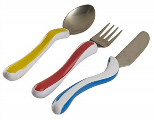 cutlery or Kura cutlery(available from amazon) has shaped handles which promote hand placement.
cutlery or Kura cutlery(available from amazon) has shaped handles which promote hand placement.
- Good sitting position at the table is important. Your child should be at the right height with their feet supported. (see posture section)
- Encourage the child to hold their knife and fork with their hands pointing down towards the plate encouraging them to point their fingers. Provide a visual picture next to their placemat to help provide a visual reminder, or mark the cutlery with a sticker or pen mark to provide a prompt of where to place their index finger.
- Practice using a knife and fork away from meal times during a fun activity e.g. cutting up playdough to help avoid frustration.
- Guide the child's hands whilst they are learning to use the knife and fork together e.g. hand over hand.
- Encourage your child to cut softer textures within mealtimes whilst they are learning e.g. fish fingers, boiled potatoes, cooked vegetables and increase the resistance to tougher textures e.g. meat as their skills develop.
- Cut half of the food on the plate and encourage your child to cut the rest, reducing the amount as their skills progress.
- Use a non-slip mat under your child’s plate to prevent it moving.
Self-Care Skills: Bottom Wiping:
- Be patient, it can take many months for your child to learn this skill.
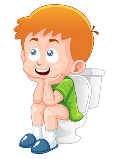
- Explain why it is important
- Ensure that your child is seated on potty/toilet with their feet supported either on floor or box
- Show your child what it is they need to do both when they need to use the toilet or through pretend play
- Talk through the steps involved
- Start by using wet wipes
- Play games such as placing water-based paint /shaving foam on the child’s bottom during bath time and have them wipe this off with a light coloured flannel. Prompts to see if the flannel is clean.
- Place stickers on the child's lower back when they are sitting down and encourage them to reach round and peel off.
Importance of Fine Motor Skills:
Fine motor skills are essential for performing everyday skills. Fine motor skills are those that involve a refined use of the small muscles which control the hand, fingers and thumb. With the development of these skills, a child is able to complete important tasks such as writing, using scissors, engage in different types of play, use cutlery, complete dressing fastenings including buttons, zips and shoelaces. These abilities gradually develop through experience and exposure to a variety of toys and materials.
Fine Motor Skill Problems:
Your child may have difficulties with some or all of the following: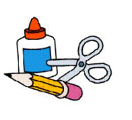
Academic Skills including:
- Pencil Skills (pencil grasp development, colouring, drawing, writing)
- Scissor Skills (cutting, holding and coordinating scissors)
Play Skills Including:
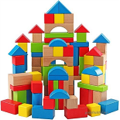
- Difficulties with play and construction play (lego, duplo, puzzles, threading, playdough, peg activities,)
- Difficulties with identifying a preferred hand (hand dominance), using two hands together
Self-Care :
- Dressing: difficulties with tying shoelaces, buttons, zips, belts, dressing and undressing
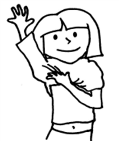
- Eating: difficulties with using cutlery, opening lunch boxes and food packets
- Hygiene: difficulties with cleaning teeth, brushing hair and toileting.
How can I support my child?
Posture: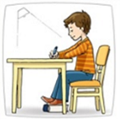
Children need to sit in a good position so that they are stable in order to concentrate and use their hands effectively. When working on handwriting skills, fine motor skills or any desktop tasks, it is important to ensure that the child is using a chair and table of the correct height. The following ergonomic principles should be applied:
- Sitting with bottom all the way back.
- Chair tucked in all the way.
- Legs fully supported by the length of the seat
- Feet flat on the floor (a box or similar can be used if necessary)
- Table height should be at elbow level (child can sit on a box or firm item if necessary).
- Sitting in the chair with shoulders straight. Ensure that the back is making contact with the backrest. Avoiding slouching or stooping forward.
Fine motor skills
Engage your child in activities including:
- Construction Toys: lego, duplo, mecano, kid n knex, magnetics,
- Puzzles, Inset Puzzles,
- Board games , Marble Run, Octons,
- Posting, Threading, Sewing
- Play dough, space putty, plasticine
- I Tweezer games: operation, feed the animals, avalanche fruit salad, bed bugs, crocodile teeth, using tweezers to sort objects / balls into colours, number, containers
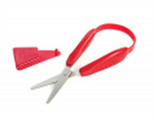
- I Origami, arts and crafts
- I Baking, gardening, helping with food preparation,
Scissors:
Encourage activities including:
- Cutting using scissors – play dough, space putty, straws, card and paper of different thicknesses – cutting along straight line, wavy, zig zag lines, shapes of different sizes, cutting out dot to dots, material etc
- Cutting out shapes to make a picture
- Cutting out shapes of different sizes and complexity
- Scissor activity sheets available from: www.allkidsnetwork.com/fine-motor-skills/scissor-skills.asp
- Using handy scooper / handy tools to learn skills of how to use scissors, getting them to pick up objects and place into containers.
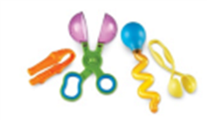
- Squirting water from a spray bottle or squirt gun
- Make pictures / animals using paper e.g. hedgehog, snowflakes
- Try different spring / self-opening scissors which open automatically after being squeezed
- Encourage your child to keep both elbows on the table for stability
- Start with smaller pieces of thick paper / thin car as this is easier to manipulate
- Two-handed activities - opening jars, stabilising paper whilst drawing, pouring, holding a bowl and stirring, wind-up toys.
Handwriting / typing:
Activities including:
- Pre-writing patterns using different sensory materials e.g. pencils, chalk, sand, having foam, using dots to help your child learn how to form them
- Pre-writing patterns, wipeable learn to write books, overwriting, mazes, dot-to dots, colouring, wordsearches, crosswords
- Sensory letters made out of sandpaper, bubble wrap, foil, cotton wool, to encourage to use index
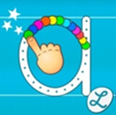 finger to follow the letter to help letter formation
finger to follow the letter to help letter formation
- Sensory trays: forming letters in trays with different sensory materials
- Grouping letters together to help learn formation e.g. h, n, m
- Handwriting apps on the ipad / tablet e.g iTrace, finger paint, writingpad, colouring book, letterschool
- Chalk drawing, writing on pavement and outside walls, white boards—practicing different shapes and letters
- Patterns, lines, letters on a large paper using buttons, cotton wool place the objects over the lines
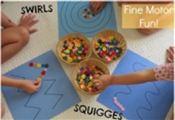
- Handwriting without tears resource book, provides a technique of teaching letters www.hwtears.com
Typing Skills:
Children who struggle with writing may benefit from developing there typing skills as a strategy to support this area and provide an alternative method to demonstrate their knowledge. Learning to use the keyboard effectively is an important skill for any child and the earlier they learn to type, the easier they will find it.
The following suggestions may help with the development of typing skills:-
Before and during typing ensure the following
- Sit up straight, bottom back in chair.
- Feet flat on floor.
- Keyboard not too high or too low, forearms resting lightly on edge of table
- Fingers curved.
- Wrists flat.
- Fingers resting lightly on middle row and thumbs on spacebar. It is important to return to this position throughout typing.
- Use two hands where possible
Online typing websites:
To view or download this page as a PDF leaflet please click
here..